David Brennan had dreams of becoming a professional cyclist, but a trip home to Mayo back in 2009 led to a change of plan. Now he’s at the helm of a new bookstore and cafe in the town of Castlebar, and his experience could have lessons for towns across Ireland, where derelict shops are in dire need of a new lease of life.
An accountant by profession, Brennan had previously pursued a dream of becoming a professional cyclist, training in Troyes, France, and Fort Lauderdale in the US. For a time he hoped to reach at least “the equivalent of division four in soccer” in the competitive cycling world.
However, a visit back home for a short break in 2009, with the intention of then moving to Australia, didn’t quite go to plan.
His mum Kathryn, who had been running the original local bookshop, Castle Books, since 1995, was stuck for staff.
Brennan happened to return in the middle of the busy school books period towards the end of summer, which quickly leads into the preparations for the important Christmas period. He soon changed his plans.
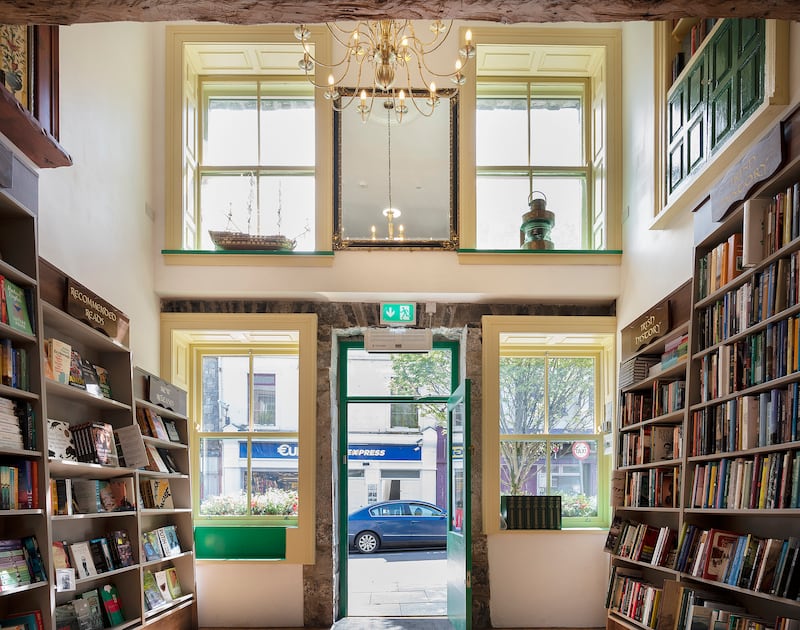
“I’ve always loved home and the great buzz in the shop on Castle Street. So, it wasn’t hard to stay,” he says.
Situated on one street amid a warren of side streets, Castle Books is located where, until recent years, the lords Lucan still had the right to collect ground rents. Now it specialises in bargain and educational books, after the family embarked upon a new venture.
A local landmark had caught their eye. Wynnes’ old studio, located on the town’s main thoroughfare, has a rich history. When the Land League was founded in the Imperial Hotel in Castlebar in 1879, Thomas Wynne was busy documenting life in Co Mayo and beyond in his dark room across the Mall and over on Main Street.
It is no surprise then, that a significant amount of his collection is housed at the National Photographic Archive (part of the National Library of Ireland) and at Mayo County Library. Indeed, a small number of those sepia-tinged images, gifted by the Wynne family, line the stairway of what is now Castle Books.
Thomas Wynne was much more than a pioneering photographer at a time when the craft was still only in its infancy in cities such as London and Dublin. He also had a reading room in the property – or “circulating library” as it was then known – before the services of public libraries reached such outposts as Castlebar.
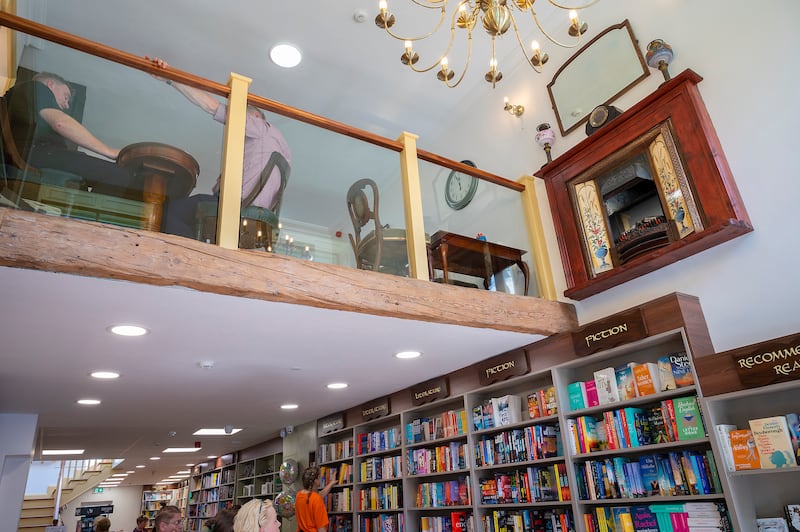
After Thomas Wynne died in 1893, his youngest son Richard James continued the photographic business in the premises. Indeed, the family remained in business in the county town until 2011, when it finally closed its newsagents shop on Market Street. At that stage, the photographic studio across the street was long abandoned.
Brennan and his parents, Kathryn and John, came to see the potential in the derelict property, however, and they purchased the listed building in 2014.
“When we came to view it, we had to go and get wellies and wet gear to walk through all the foliage. It was like going into the wilds,” says Brennan. “The ceilings had fallen in too,” he adds.
We knew it was a listed building, but didn’t know what that would entail
It wasn’t the only abandoned-looking building on the town’s main thoroughfare, which encompasses Market Street and Bridge Street. At the time there were more than two dozen empty premises, courtesy of the fall-out from the Celtic Tiger collapse.
While the front of the building had been used as an office for the Castlebar Four Day Walks, the remainder was in a state of dereliction.
Now, however, the property has been given a quirky new lease of life, opening a new chapter in the vibrancy of this town’s story.
During the summer, the family opened their new bookshop and cafe. It was a long time coming to fruition.
“It took eight years for us to get to the point of opening the doors,” Brennan explains. “We knew it was a listed building, but didn’t know what that would entail. We soon learned a lot from the county council’s conservation architect, who was most helpful.”
Brennan cites the example of a narrow little stairs on the first floor to the front of the building.
“It has been there since the late 1800s and had to be conserved. It is not practical at all and leads to our office, store room and canteen, but it attracts so many people taking photographs of it. It is quaint and now an important feature,” he says.
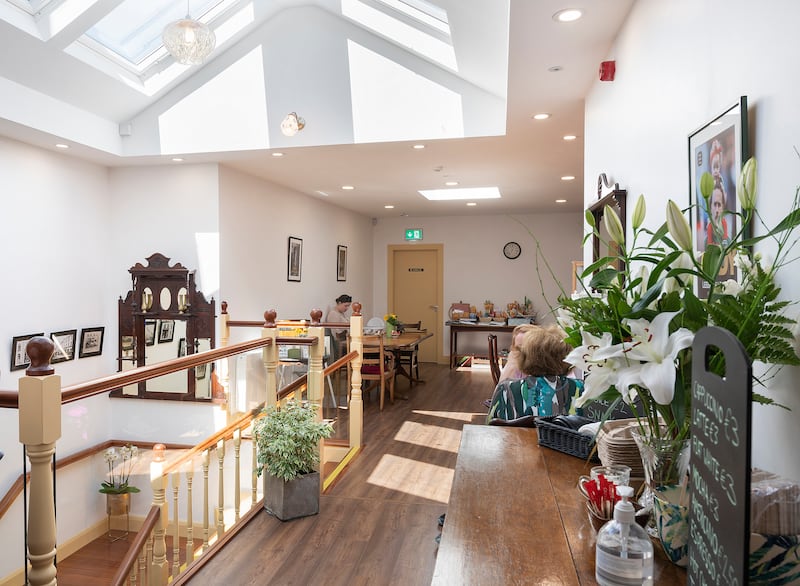
There were other challenges, too.
“Two weeks after we bought the building the glass from the windows on the second floor fell down onto the street. Luckily, nobody was passing at the time.”
The fallout from the recession in Co Mayo meant there was a typical exodus of tradespeople leaving for work abroad.
We created a mezzanine towards the front of the cafe, in an area that was once a bedroom used by the Wynnes
“When we finally became fully focused, we were lucky to know all the tradespeople who came on board and were very helpful and had a lot of pride in their work,” he says.
There were successes along the way too, as they managed to retain some original features such as window frames, architraves and laths in the roof space, Brennan explains.
The original building has now been extended right back throughout the yard, where there had once been outbuildings.
“We created a mezzanine towards the front of the cafe, in an area that was once a bedroom used by the Wynnes. It adds a connectedness to the bookshop downstairs and a sense of homeliness to the cafe,” he says.
The conversation between past and present continues with an original fireplace among the eclectic mix of old furnishings, sideboards and tables. A contemporary perspective is the focus on an art wall dedicated to exhibitions by local artists. Interestingly, it isn’t the only rainbow of colour in the cafe, which also boasts an entire wall of balls of wool.
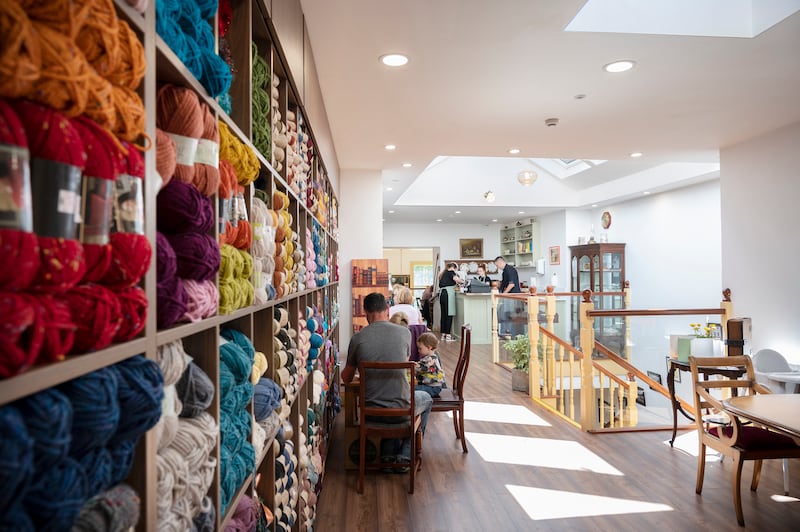
“Traditionally wool was sold in bookshops, and back in 2014 the whole town seemed to be gone mad on knitting scarves – so we added wool to our products,” Brennan continues.
This led to knitting and crochet classes, with plans also to broaden the appeal by starting a club for board games.
“My wife, Maura, is thinking of starting a children’s story time too,” he adds. Well, since the couple have two small children, Willow (4) and John (1), the advocacy for Peppa Pig and Julia Donaldson’s Stick Man should be compelling.
Meanwhile, downstairs, there is a queue of customers at the counter. This feature is “well over 100 years old” and once took pride of place in Brennan’s grandfather Richard Brennan’s shop, on Aiden Street, Kiltimagh.
A French tourist is buying all three of local author Sally Rooney’s books, while two older men are chatting to Brennan about the recently published history of Castlebar.
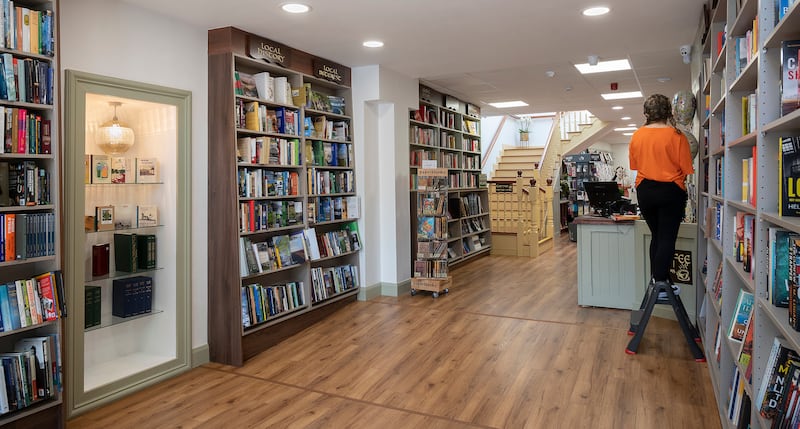
Books lie very close to the family’s heart. As well as their shops, the Brennan family also runs a press, having established Mayo Books Press in 2021 to develop and publish books, both those with a Co Mayo interest and also from further afield. Among its publications are The History of Castlebar by Noel Campbell and John Healy. It has also republished in hardback House of Pain – Through the Rooms of Mayo Football, by Irish Times journalist Keith Duggan.
While the staircase may be lined with images of Ireland in days gone by, the photographs are not the only nod to life in the 19th century. These days, while Brennan is more than happy for his customers to buy a book and perhaps wander upstairs for a coffee and cake, they may also get lost within the leaves of this new narrative.











